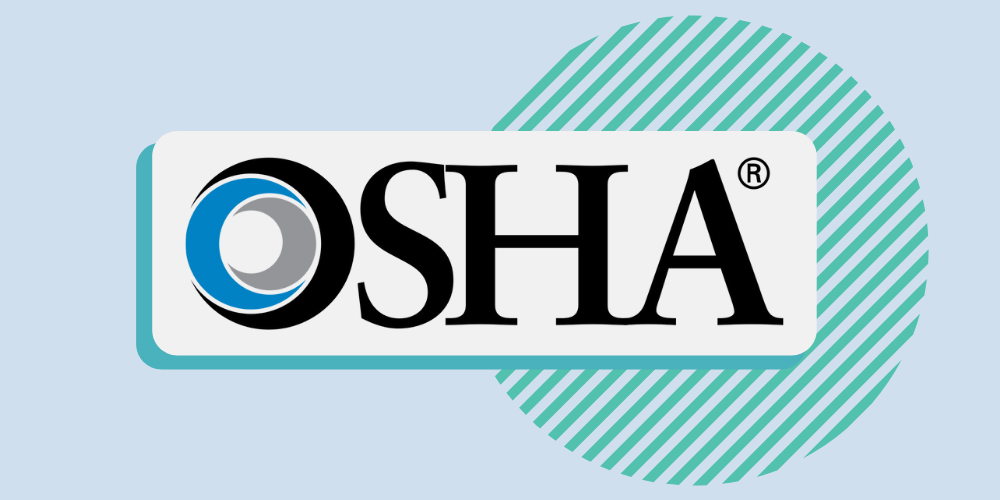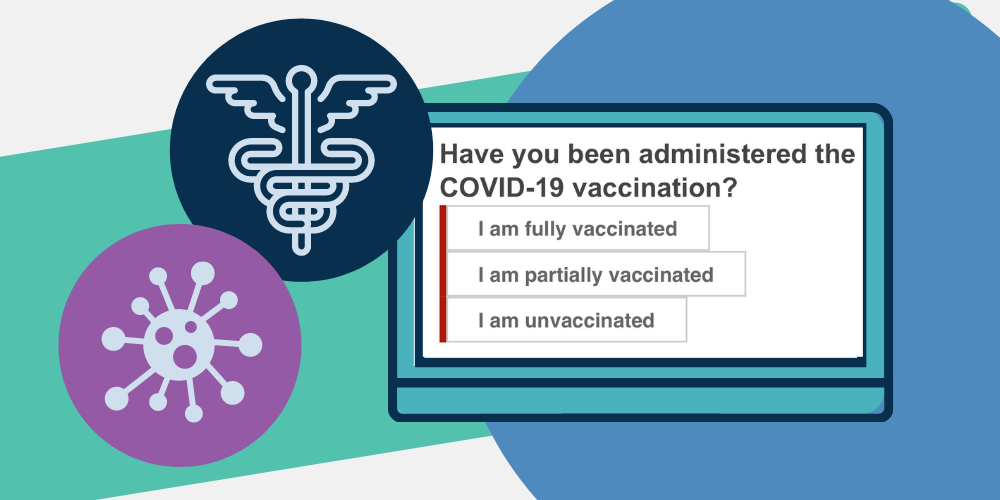
COVID-19 and the workplace
The coronavirus (COVID-19) pandemic disrupted labor markets and different sectors across the world in 2020. Regulatory bodies have come up with a wide range of standards for employers and instructions for compliance officers to reduce the impact of the COVID-19 pandemic on the workforce. For instance, OSHA issued an emergency testing standard (ETS) mandate to protect employees from the risk of COVID-19.
In this article, we’ll review OSHA’s ETS vaccine mandate, its requirements for employers, effective dates, and ramifications of non-compliance.
First, what is OSHA?
Occupational Safety and Health Administration (OSHA) is a regulatory agency of the United States Department of Labor. It aims to improve workplace safety and facilitate healthy working conditions by enforcing standards and guidelines for employers. It also offers training, assistance, and education to employers on creating a secure workplace for working men and women.
The regulatory agency conducts inspections at workplaces and imposes fines for compliance violations. Inspections are often triggered by referrals, workplace fatalities, workplace injuries, and employee complaints. Inspections are conducted without any advance notice by trained compliance officers through telephonic discussions and/or on-site visits.
What is the OSHA ETS vaccine mandate, and what does it mean for my business?
OSHA issued an ETS that requires private employers operating with 100 or more employees to ensure all their workers get fully vaccinated.
In lieu of the OSHA ETS COVID-19 vaccine mandate, employers should provide weekly COVID-19 negative test reports of employees and enforce wearing a face mask in the workplace (these rules may change from time to time based on the decisions of the Federal Government and the Department of Labor in conjunction with COVID-19 trends).
A few vital aspects of OSHA’s ETS vaccine mandate for employers are:
Support for vaccination
As per the ETS, every employer should support the COVID-19 vaccination by:
- Providing sufficient time for each employee to get vaccinated.
- Offering a paid sick leave to recover from vaccination side effects.
Obtain and maintain records
As per the ETS mandate, employers must maintain a record of every employee’s vaccination status.
Employers need to provide proof of vaccination, which may include:
- The medical report documenting the COVID-19 vaccination.
- The COVID-19 vaccination record card itself.
- The record of immunization from a healthcare provider or public health information system.
Weekly COVID-19 testing
Employers should conduct a weekly COVID-19 test for employees who are not fully vaccinated. If a remote employee is returning to the workplace, he or she should be tested for COVID-19 within 7 days before returning to work.
Communication
It is the responsibility of the employer to communicate ETS requirements, guidelines, policies, and standards to employees in a language they understand.
The employer vaccine mandate is in place to protect workers from falling ill, spreading the virus, and in severe cases, passing away due to the virus. OSHA believes that the pandemic can be controlled if employers have a framework that emphasizes full vaccination, the use of face masks, frequent testing, and not allowing infected employees inside of the workplace.
Note: Even if a vaccine mandate from OSHA were to not exist, employers would still need to implement a vaccine tracking solution sooner rather than later because it’ll allow them to:
- Reduce the administrative burden of managing variations in vaccine policies across the country.
- Reduce the general liability of unsafe workplaces and avoid lawsuits from employees.
- Monitor and maintain the general health of all employees to the best of their abilities.
Employers covered by the ETS
Private companies with 100 or more employees and state and local government employers with OSHA-approved State Plans are covered by the ETS. However, not all employees working for employers covered by the ETS are required to follow the provisions of the ETS.
The guidelines of the ETS do not apply to the following types of employees even though their employers are covered by the ETS:
- Employees who are working from home.
- Employees who work outdoors.
- Employees who don’t attend workplaces where others are present.
Workplaces not covered by the ETS
OSHA believes that not all workplaces have the capability to implement programs that comply with the requirements in the ETS.
The following types of workplaces are not covered by the ETS:
- The Safer Federal Workforce Task Force.
- Healthcare settings that offer healthcare and support services.
- Private companies with fewer than 100 employees.
- Public employers in states without State Plans.
OSHA ETS vaccine mandate FAQs
What does the ETS require of employers?
Employers are responsible for:
- Implementing and enforcing workplace vaccination policy that either (a) requires mandatory vaccinations, or (b) allows employees to choose between vaccination or weekly COVID-19 testing.
- Providing information to employees about the ETS, COVID-19 vaccines, and workplace vaccination policy.
- Determining the vaccination status of all employees, obtaining valid proof of vaccination or weekly test results, and maintaining records to ensure compliance.
- Reporting work-related COVID-19 fatalities and hospitalizations to OSHA.
What employers are covered under the ETS?
All employers currently under OSHA’s jurisdiction would be obligated to comply with the ETS if they have 100 or more employees. This accounts for approximately two-thirds of all U.S. workplaces in the private sector.
What workers are counted under the 100-employee rule?
Generally, if a worker is directly employed by a company, they will be counted toward the 100-employee threshold that determines whether an employer is covered by the ETS. This includes:
- Remote employees
- Part-time employees
- Employees that work exclusively outdoors
- Temporary or seasonal workers
Are independent contractors counted under the 100-employee rule?
No, independent contractors are not counted.
How are workers from staffing agencies classified?
Staffing agencies hire workers and then coordinate placement at workplaces operated by “host” employers. Because the staffing agency is the legal employer of the worker, these workers are counted toward the staffing agency’s employee headcount, not the host employer’s.
Are some employees exempt from the ETS requirements?
Yes. Employees are not subject to ETS requirements if they work from home, work exclusively outdoors, or report to workplaces that do not have co-workers or customers present. However, these employees are still counted when determining whether an employer reaches the 100-employee threshold for ETS coverage.
What are the ramifications of non-compliance?
Normally, employers face penalties up to $13,653 per violation for serious violations from OSHA. The penalty for failure to abate is $13,653 per day beyond the abatement date. These same penalties may apply to non-compliance with ETS after compliance dates.
When does the ETS take effect?
The ETS technically went into effect on November 5, 2021 – the day it was published in the Federal Register. Enforcement was supposed to begin December 5, 2021 for all portions of the ETS other than testing and vaccination compliance date, which would have been January 4, 2022.
With current challenges to the OSHA ETS, the exact timeline for enforcement is up in the air.
What if I have operations in multiple states?
When operating in multiple states, you need to follow varying guidelines, standards, and timeframes applicable in each state. Let’s say you are operating in Alabama and Alaska. Alabama is a Federal OSHA state and Alaska is a State OSHA state. Therefore, you need to follow the standards and timelines of OSHA’s ETS for the operational unit located in Alabama and the State OSHA regulations for the operational unit located in Alaska.
Do remote employees need to comply with requirements?
Although remote employees count towards the 100-employee requirement (i.e. an employer with 75 onsite employees and 25 remote employees would come under the OSHA ETS), ETS requirements, such as showing proof of vaccination and weekly testing, do not apply for remote employees.
Are employers required to collect proof of vaccination?
Yes. Under the ETS, employers will need to collect proof of vaccination from employees and maintain an updated, accurate record. An employee who does not produce proof of vaccination status must be treated as an unvaccinated employee.
Stay compliant with BP Logix’s vaccine tracker
Having a vaccine tracker with a customizable dashboard that offers an integrated view of the enterprise’s vaccination data would be helpful in staying compliant with the OSHA COVID-19 vaccine mandate guidelines.
BP Logix’s vaccine tracker includes an employee, supervisor, and administrative view for access by all employees of your company.
Comply with COVID-19 vaccination mandates and respond quickly to policy changes with the help of the BP Logix vaccine tracker application. Request a demo to see how it can assist your organization remain compliant!



